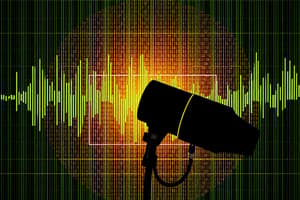Podcast
Questions and Answers
What does the acronym NP stand for in syntactic structure?
What does the acronym NP stand for in syntactic structure?
- Negation Phrase
- Numeric Phrase
- Noun Phrase (correct)
- Natural Phrase
In the structure 'The girl with the big fluffy dog', what role does the phrase 'with the big fluffy dog' serve?
In the structure 'The girl with the big fluffy dog', what role does the phrase 'with the big fluffy dog' serve?
- Verb Phrase
- Prepositional Phrase (correct)
- Noun Phrase
- Adjective Phrase
How is syntactic or structural ambiguity often resolved in sentences?
How is syntactic or structural ambiguity often resolved in sentences?
- By attaching prepositional phrases correctly (correct)
- By using synonyms more effectively
- By analyzing the emotional tone of the sentence
- By looking at the length of the sentences
What is the primary focus of the Expectation-Based Comprehension approach?
What is the primary focus of the Expectation-Based Comprehension approach?
What does the VP in syntax refer to?
What does the VP in syntax refer to?
What is the primary characteristic of the cohort model in spoken word recognition?
What is the primary characteristic of the cohort model in spoken word recognition?
What distinguishes shallow orthography from deep orthography in cross-language visual word recognition?
What distinguishes shallow orthography from deep orthography in cross-language visual word recognition?
How does masked priming affect the awareness of the prime used in visual word recognition experiments?
How does masked priming affect the awareness of the prime used in visual word recognition experiments?
What is a critical feature of the experimental paradigm used in semantic categorization tasks?
What is a critical feature of the experimental paradigm used in semantic categorization tasks?
What is the main implication of studying the effects of orthographic depth in cross-language visual word recognition?
What is the main implication of studying the effects of orthographic depth in cross-language visual word recognition?
What is the McGurk effect primarily an example of?
What is the McGurk effect primarily an example of?
Which term describes the process of creating a prototype of speech sounds based on various speaker tokens?
Which term describes the process of creating a prototype of speech sounds based on various speaker tokens?
What does phoneme awareness contribute to?
What does phoneme awareness contribute to?
Which of the following best describes the nature of categorical perception?
Which of the following best describes the nature of categorical perception?
Which factor influences the auditory perception of speech according to the orthographic effect?
Which factor influences the auditory perception of speech according to the orthographic effect?
What experimental condition is explored when examining low-level processing in speech perception?
What experimental condition is explored when examining low-level processing in speech perception?
Audio-visual integration in speech perception primarily refers to which of the following?
Audio-visual integration in speech perception primarily refers to which of the following?
In the context of fixing patterns, what primarily distinguishes Japanese speakers from English speakers?
In the context of fixing patterns, what primarily distinguishes Japanese speakers from English speakers?
Which area of the brain is primarily associated with visual word recognition?
Which area of the brain is primarily associated with visual word recognition?
What happens to the left fusiform gyrus when participants see scrambled words?
What happens to the left fusiform gyrus when participants see scrambled words?
In syntactic processing, which task measures how long readers spend on ambiguous words?
In syntactic processing, which task measures how long readers spend on ambiguous words?
Which of the following is NOT a component of a NOUN PHRASE according to the structure given?
Which of the following is NOT a component of a NOUN PHRASE according to the structure given?
What characterizes the Visual Word Form Area in terms of visual input?
What characterizes the Visual Word Form Area in terms of visual input?
In the context of bilingual visual word recognition, which model is referenced?
In the context of bilingual visual word recognition, which model is referenced?
What defines an open-class word in language processing?
What defines an open-class word in language processing?
What is a defining feature of a closed-class word?
What is a defining feature of a closed-class word?
Which of the following is least likely to elicit activation in the left fusiform gyrus?
Which of the following is least likely to elicit activation in the left fusiform gyrus?
What does the structural priming effect suggest about sentence processing?
What does the structural priming effect suggest about sentence processing?
Flashcards
Categorical Perception
Categorical Perception
The tendency to perceive speech sounds as belonging to distinct categories rather than as a continuous range of variation.
Prototype of Speech Sounds
Prototype of Speech Sounds
A mental representation of an ideal speech sound, created by averaging various instances of that sound spoken by different people.
McGurk Effect
McGurk Effect
An illusion where the visual information about speech (e.g., lip movements) affects how we perceive the auditory information (speech sounds).
Motor Theory of Speech Perception
Motor Theory of Speech Perception
Signup and view all the flashcards
Orthographic Effect
Orthographic Effect
Signup and view all the flashcards
Phoneme Awareness
Phoneme Awareness
Signup and view all the flashcards
Lexical Access
Lexical Access
Signup and view all the flashcards
Pre-lexical Processing
Pre-lexical Processing
Signup and view all the flashcards
Gating task (spoken word)
Gating task (spoken word)
Signup and view all the flashcards
Cohort model (spoken word)
Cohort model (spoken word)
Signup and view all the flashcards
Masked priming (visual)
Masked priming (visual)
Signup and view all the flashcards
Orthographic depth (visual)
Orthographic depth (visual)
Signup and view all the flashcards
Semantic Categorization
Semantic Categorization
Signup and view all the flashcards
Visual Word Recognition
Visual Word Recognition
Signup and view all the flashcards
Phonology in Lexical Access
Phonology in Lexical Access
Signup and view all the flashcards
Left Fusiform Gyrus
Left Fusiform Gyrus
Signup and view all the flashcards
Visual Word Form Area
Visual Word Form Area
Signup and view all the flashcards
Dyslexia
Dyslexia
Signup and view all the flashcards
Sentence Processing
Sentence Processing
Signup and view all the flashcards
Syntax
Syntax
Signup and view all the flashcards
Syntactic Trees
Syntactic Trees
Signup and view all the flashcards
Open-Class Words
Open-Class Words
Signup and view all the flashcards
Closed-Class Words
Closed-Class Words
Signup and view all the flashcards
Verb Phrase Structure
Verb Phrase Structure
Signup and view all the flashcards
Syntactic Ambiguity
Syntactic Ambiguity
Signup and view all the flashcards
Constituent Analysis
Constituent Analysis
Signup and view all the flashcards
Expectation-Based Comprehension
Expectation-Based Comprehension
Signup and view all the flashcards
Parsing of Syntax
Parsing of Syntax
Signup and view all the flashcards
Study Notes
Speech Perception
- Language-specific phonology (inventory) that has voicing, aspiration; every phoneme can form a category by itself, and actualization is the exemplar.
- Contrastive sound units produce words.
- Dialects can vary, resulting in many variations in phonemic inventory.
- Sound categories differentiate different words to produce minimal pairs.
- Native sound categories are formed gradually in infancy through continuous exposure to input (from caregivers).
- Sounds from a native language can present challenges when learning a second language.
- Japanese speakers' perception of English /r/ and /l/ phonemes is influenced by their language, as these sounds are not contrastive in Japanese.
- Categorical perception involves categorizing an auditory signal (audio stimulus).
- We categorize sounds that are similar to a prototype as belonging to a category.
- Categories can change with language background.
- A categorical perception experiment typically involves a continuum of stimuli, varying a key acoustic feature (like VOT).
- Listeners categorize the sounds continuously.
- Response time is slower for stimuli that are slightly different but within the category compared to stimuli exactly on the boundary.
- Listeners are sensitive to small differences even if they are categorized the same.
Categorical Perception of Voice Onset Time (VOT)
- VOT is a key acoustic feature used to distinguish /ba/ from /pa/.
- Participants categorize sounds along a continuum.
- The decision time is based on category membership.
- Decision time is longer at the category boundary.
- Listeners are able to detect subtle differences within categories.
Impact of Masks on Perception of Speech
- Masks impacts perception because lip movements don't match the sounds they hear.
Motor Theory of Speech Perception
- Speech perception involves perceiving gestures from motor cortex.
- Perception of speech involves articulatory gestures, like mouth and tongue movements.
- Motor cortex activation occurs during perception.
- Perception of speech sounds involves mimicking the sounds in the mind.
Written Form (Orthography)
- Not all writing systems represent speech sounds similarly.
- Some writing systems are more consistent than others.
- Mental representations of written forms are active after literacy training.
- Degraded auditory signals can be challenging when learning new languages, because written forms can sometimes differ from spoken versions.
- Silent letters influence perception of speech.
Phoneme Awareness
- Phoneme awareness requires knowledge of phonemes.
- Phoneme awareness improves with literacy training.
Possible Paradigms for Low-Level Processing
- Phoneme (or rhyme) monitoring task.
- Identification tasks (identify heard syllables or nonwords.)
- Sound-splicing studies (examining how sound transitions affect lexical decisions).
- AX discrimination tasks (determining if two sounds or nonwords are the same or different).
- Lexical decision tasks (determining whether a presented stimulus is a word or not).
- Word spotting task (visual or auditory, identifying words in a sequence).
Language Background and Word Recognition
- Language background (number of languages spoken) influences word recognition speed.
- Increased competition in language areas can slow down word recognition.
Context Effect
- Longer context allows for easier and faster recognition.
- The frequency of a word affects context.
- Higher-frequency words are recognized faster than low-frequency words.
Visual Word Recognition
- Visual word recognition has several models with distinct layers for features, letters, and words.
- Models vary across orthographies.
- Processing is language-dependent.
- Reading skills directly relate to activation in visual areas.
Dyslexia and Visual Word Recognition
- Surface dyslexia and phonological dyslexia are specific deficits in reading and decoding words.
- Deep dyslexia involves semantic paraphasia, which can involve reading words with semantically related but incorrect meanings.
- Different types of dyslexia differ in activation patterns in the brain.
Syntactic Processing
- Syntax focuses on how words are structured in sentences, to create grammatical sentences and follow rules.
- Ambiguous sentences (sentences that can have more than one interpretation) are parsed differently by the brain.
- Different types of activation patterns in the brain are related to different syntactic structures.
Chinese Letter Recognition
- Readers of Chinese languages appear more reliant on visual/orthographic processing in recognizing the characters.
- Activation of orthographic info occurs first, then phonological information, and lastly semantic processing.
Studying That Suits You
Use AI to generate personalized quizzes and flashcards to suit your learning preferences.




